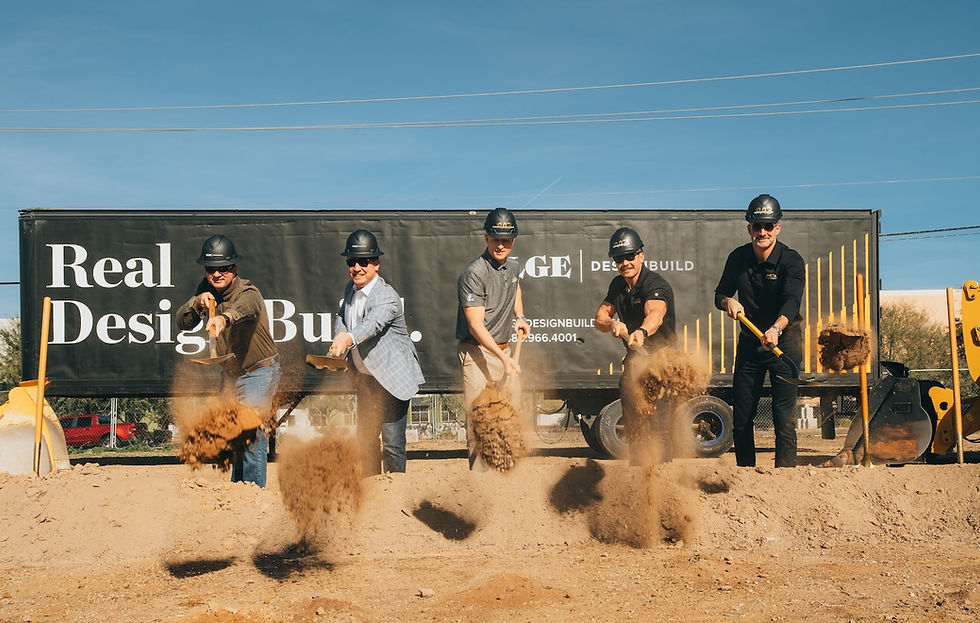Terminal 3 Renovation Speeds Transit
- Isaac Windes
- May 29, 2017
- 4 min read
The last time work was completed on Terminal 3 of Sky Harbor International Airport in Phoenix was in the late 1970s. Since then the security, technology, and flow of passengers have vastly changed the needs and logistics of air travel.
Sky Harbor rose to that challenge in 2014 when it committed to a six-year, $590-million modernization project. The money for the project is entirely from airport revenues, with no tax money going toward the renovation.
Art Fairbanks, the special projects administrator for the city of Phoenix Aviation Department, said there were some structural challenges in the construction process, including opening up the terminal for the aesthetic effect of natural lighting.
“A very complicated demolition of the 1979-era precast T members and beams required the use of specialized equipment and confidence in structural integrity to open interior areas of the terminal to vertical circulation and windows that let in the Phoenix sun on average 320 days per year," Fairbanks said.
The changes include expanded security checkpoints, updated ticket kiosks, and expanded access to electrical outlets, which will double the 1,500 outlets boasted by the terminal before the renovation.
In the old terminal, there were two security checkpoints, complicating the process for both travelers and security. The renovation consolidates the two into one, bigger checkpoint.
Fairbanks said the consolidated checkpoint is meant to alleviate long lines and inconvenience created by the antiquated system. “Our new, larger security checkpoint makes the passenger flow more efficient,” Fairbanks said. “The large checkpoint easily accommodates an influx in passengers, especially during large events such as the NCAA Final Four.”
Fairbanks said the project was being completed in three phases to allow customers to use the facilities as they are completed. “To minimize impact to our passengers, we are conducting the Terminal 3 Modernization Program in three phases,” Fairbanks said. “This allows us to effectively serve our travelers as well as minimizes impacts to our tenants and airlines.”
Phase One consists of the enhanced ticket counter space and larger consolidated security checkpoint, which was completed in December. The project currently is in Phase Two that involves the replacement of the South Concourse with a new 15-gate South Concourse and new customer amenities which is expected to be completed in late 2018/early 2019.
The final phase will entail improvements to the North Concourse, including new food and beverage outlets as well as new retailers and other amenities and is scheduled to be completed in 2020.
All of the renovations were designed by a group of architects including DWL Architects, Smith Group JJR and Corgan based out of Phoenix.
Peter Durbin, the vice president of aviation for Austin Commercial, the Dallas-based company working on the terminal, said some problems came naturally with working on such a large project. “Maintaining the facilities’ heating, cooling, electrical, fire suppression, and IT systems are constant challenges,” Durbin said. “Additionally, public safety and way-finding through the existing facility must always be coordinated with the airport’s numerous stakeholders.”
Wayfinding is the process by which employees and consumers locate and find their way around through such a large facility while it is under construction.
Durbin and Austin Commercial are experienced in this kind of work, recently having completed another airport modernization in South Carolina. "We recently completed the total renovation of the Charleston, S.C. airport and have worked for four decades at DFW (Dallas-Fort Worth) Airport modernizing various aspects of the existing terminals,” Durbin said.
Some of the complications in the actual construction during the modernization involved removing floor beams from the prior structure. "Structural renovations included removing floor beams to allow for open atrium space, numerous utility tie-ins, and constantly having to monitor landside airport vehicular traffic," Durbin said.
Steve Rao, the president of DWL Architects, said Sky Harbor had a unique architectural opportunity, given its proximity to the city.
“While many airports are not situated near the heart of a city, Phoenix Sky Harbor is,” Rao said. “The design definitely takes advantage of this and has an open, natural and intuitive flow with cutting edge amenities. The modernization of the existing terminal, as part of the larger holistic campus, provides monumental opportunities to create an identity and incorporate Phoenix Sky Harbor’s aviation legacy.”
Heather Lissner, the airport’s public information officer, said this was done by integrating a large art exhibit and museum, while still providing enhanced and modern facilities.
Rao said the whole terminal was reorganized to increase the efficiency and comfort of the customers. "This new design will improve the passenger experience by creating a natural flow with intuitive way-finding throughout the facility," Rao said. "In addition to these major upgrades, we also updated the look and feel with modern, hospitable finishes, abundant natural light, and passenger amenities."

Amenities include updated ticket kiosks that serve multiple airlines, expanded rest areas past security and an open and clear path that allows customers to find their way around. New businesses, shops, and restaurants also are part of the renovation process.
Most of the new renovations are after the security checkpoint. “Post security, passengers are provided with more new amenity options in the Great Hall such as access to restaurants, retail, clubs, passenger retreats and business centers throughout the secure side of the terminal,” Rao said.







Comments